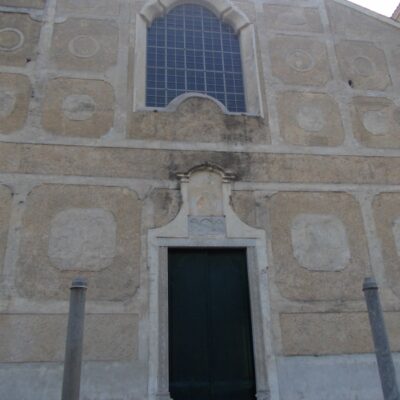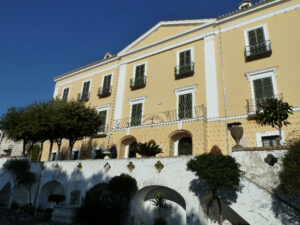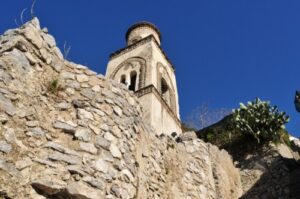MUNICIPALITY: Scala
NAME: Cathedral of St. Lawrence (former Cathedral)
LOCATION: Cathedral Square
DESCRIPTION: The cathedral, dedicated to St. Lawrence the Martyr, was built in the 11th century although it has undergone numerous interventions over the years.
The interior, with three naves divided by round arches resting on pillars, has a triapsidal transept and flat roofing of the latter and the nave, embellished with canvases by Antonio Cacciapuoti bordered by geometric and floral motifs in stucco, the work of Giovanni De Simone in 1748.
The high altar is decorated with a panel depicting the Madonna with Martyrs and in the lower register the Last Supper, by Marco Pino and Bartolomeo Guelfo.
The cross-vaulted side naves are lightened in the elevations by shallow chapels; in the right nave is a small ambo, with mosaic decoration and resting on four columns (the work comes from the church in the locality of Scala named Campidoglio).
A doorway on the right nave, surmounted by a canvas depicting the “Ecce Homo con S. Sisto Papa” by the school of Andrea Sabatino, leads via a wide staircase to the crypt below, divided longitudinally into two naves by four columns supporting cross vaults.
Resting on the left wall of the crypt is the funerary monument of Marinella Rufolo, commissioned by her husband Antonio Coppola in 1332 to a disciple of Tino da Camaino. The monument, of Gothic design, with a double slope adorned with spires, is embellished with a number of marble bas-reliefs: the Dove, Christ with the Apostles, the Death, the Assumption and the Coronation of the Virgin; in the lower register the deceased lying on top of the tomb casket echoes the classic funerary scheme with the dog crouched at her feet, while on the casket in medallions the Virgin and Saints are reproduced. On the pedestals the figures of the deceased and her husband complete the arrangement.
Notable among the church furnishings are: an episcopal mitre, a gift from Charles I d’Angiò in 1270, when he defeated the Saracens on the feast day of the patron saint; and a chalice, a work of fine goldsmithing.
The bell tower, next to the church, is three-registered and not very soaring.
Interesting is the majolica panel, inserted in the floor, dating from 1853.
SEE, VISIT, FIND: The cathedral is open all day every day and can always be visited, depending on liturgical celebrations.
FRUITION DATA: None
OPPORTUNITIES: If one does not have a tour guide, it becomes difficult to fully appreciate the beauty and importance of the works present. Therefore, it is necessary to supplement the presentation with informative materials and aids.
BIBLIOGRAFIA: FRANCIOSA N., Scala. Storia, Cultura e Paesaggio, Salerno 2001
CAFFARO A.-GARGANO G., Costiera amalfitana, guida storico-artistica, Salerno 1979





